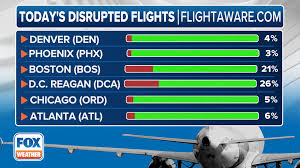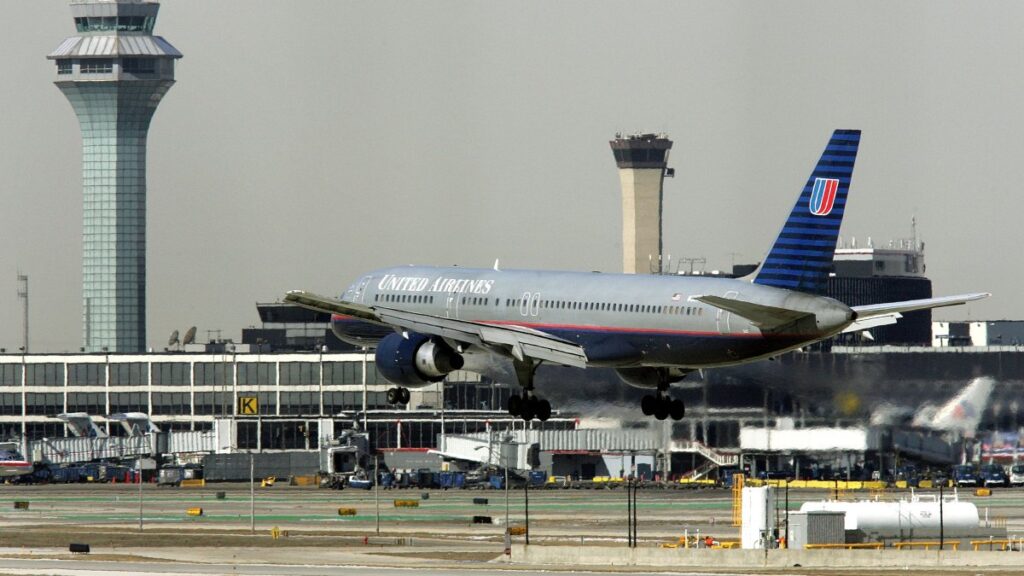**Concern Regarding the Increase in Flight Delays and Cancellations Considerable disruptions that have impacted millions of travelers globally.**
Recently, several prominent airlines, including Air Canada, Air France, United, British Airways, Ethiopian Airlines, Lufthansa, and Emirates, reported more than 1,700 flight delays, with substantial disruptions occurring at Chicago’s O’Hare Airport. This situation underscores the urgent necessity to identify and address the underlying causes and effects of these disruptions.
Causes of Flight Disruptions: A Complex Interplay
- Weather Conditions: Inclement weather, such as thunderstorms, snowstorms and extreme temperatures, significantly impact flight schedules. Consequently, weather-related delays have become a major challenge for airlines.
- Air Traffic Control: Congestion, staffing shortages and technical issues at air traffic control centers contribute to delays. Furthermore, inadequate coordination between airlines and air traffic control can exacerbate these issues.
- Mechanical Issues: Aircraft maintenance and technical problems can ground planes, causing cascading delays. To mitigate this, airlines must invest in robust maintenance strategies.
- Staffing Shortages: Pilot and crew shortages, particularly during peak travel seasons, exacerbate disruptions. Airlines can address this by implementing flexible staffing models and cross-training personnel.
- Global Events: Political unrest, natural disasters and health crises can disrupt air travel. In such situations, airlines must be prepared to adapt quickly to changing circumstances.

Consequences of Flight Disruptions: Far-Reaching Effects
- Economic Impact: Flight delays and cancellations result in significant financial losses for airlines, airports and the broader economy. Ultimately, these losses can have a ripple effect on the global economy.
- Traveler Stress: Disruptions cause frustration, anxiety and inconvenience for passengers, damaging their overall travel experience. Moreover, repeated disruptions can erode customer loyalty.
- Safety Concerns: Delays and cancellations can compromise flight safety, as planes may be forced to operate beyond recommended time limits. This highlights the need for airlines to prioritize safety above all else.
- Reputation Damage: Repeated disruptions can harm airlines’ reputations, leading to long-term consequences for their business.
Solutions to Mitigate Flight Disruptions: A Multi-Faceted Approach
- Improved Air Traffic Management: Enhanced technology and coordination between airlines, airports and air traffic control centers can optimize flight schedules. Additionally, predictive analytics can help anticipate potential disruptions.
- Predictive Analytics: Advanced data analysis helps airlines anticipate and prepare for potential disruptions. This proactive approach can reduce the impact of delays and cancellations.
- Staffing Strategies: Airlines can implement flexible staffing models, cross-training personnel and leveraging technology to reduce shortages.
- Weather Mitigation: Airports and airlines invest in weather forecasting and mitigation measures, such as wind shear detection systems.
- Passenger Communication: Transparent communication and proactive updates help manage traveler expectations and reduce stress.

Industry Initiatives and Collaborations: Working Together
- International Air Transport Association (IATA): IATA works with airlines, airports and governments to develop common standards and best practices for managing disruptions.
- Airline Industry Associations: Industry associations, such as the Air Transport Association (ATA), facilitate collaboration and information sharing among member airlines.
- Airport Collaborative Decision Making (A-CDM): A-CDM initiatives promote coordination between airlines, airports and air traffic control centers to optimize airport operations.
Conclusion
The recent flight delays and cancellations highlight the complexity of the aviation industry. Understanding the causes and consequences of these disruptions is crucial for developing effective solutions. By implementing improved air traffic management, predictive analytics, staffing strategies and passenger communication, airlines and airports can mitigate the impact of disruptions. Collaboration among industry stakeholders and investment in technology and infrastructure are essential for ensuring a smoother, safer and more efficient air travel experience.

















